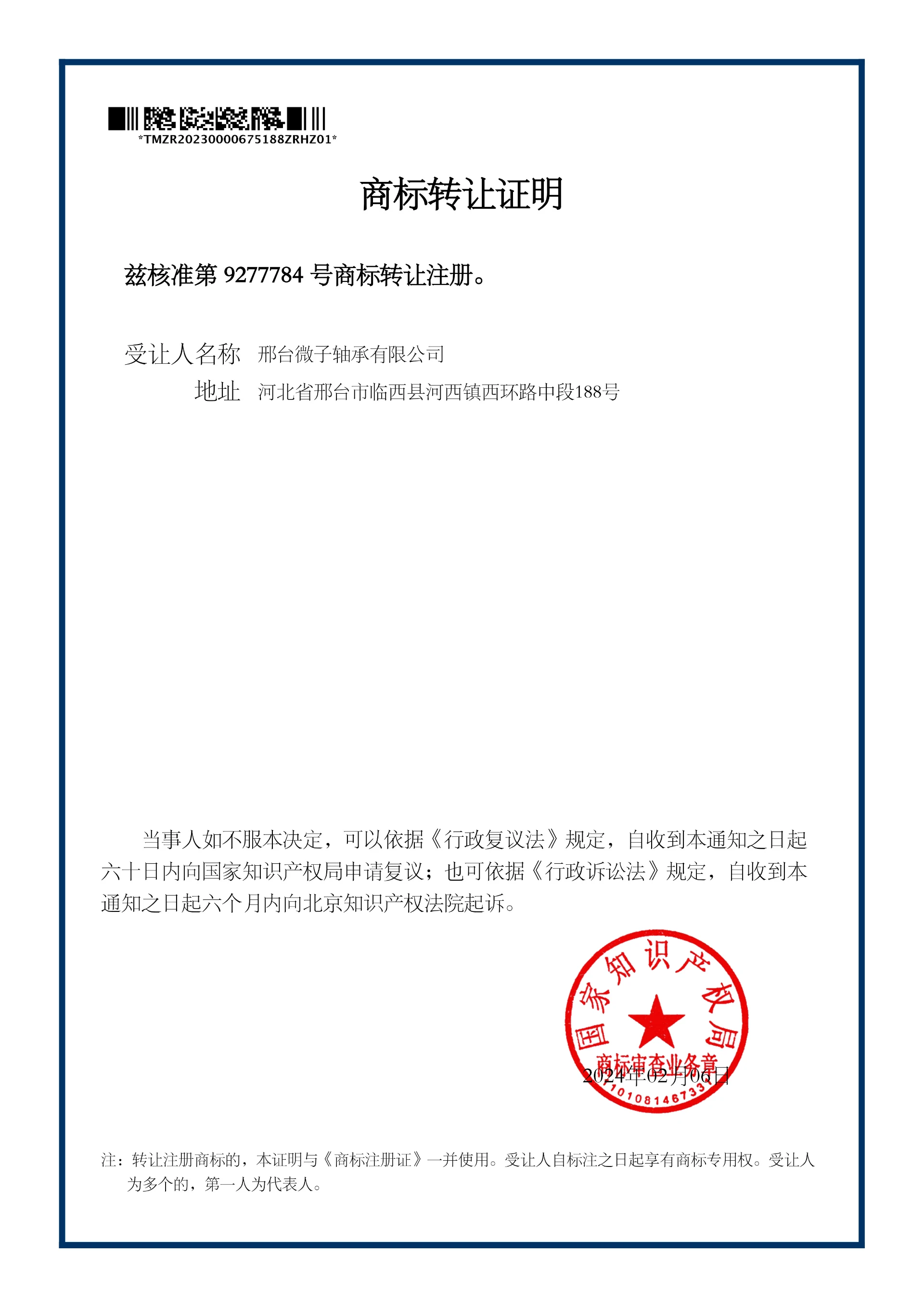
Dec . 22, 2024 13:54 Back to list
stainless thrust bearing
Understanding Stainless Steel Thrust Bearings Characteristics, Applications, and Benefits
Thrust bearings are crucial components in various mechanical systems, facilitating the transfer of axial loads and absorbing forces generated during movement. Among the various types of thrust bearings available, stainless steel thrust bearings have gained popularity due to their unique properties and advantages. This article delves into the characteristics, applications, and benefits of stainless steel thrust bearings, highlighting their significance in modern engineering.
Characteristics of Stainless Steel Thrust Bearings
Stainless steel thrust bearings are renowned for their exceptional corrosion resistance, strength, and durability. The primary material used in these bearings is stainless steel, which generally comprises iron, carbon, and a minimum of 10.5% chromium. This composition endows the bearings with high resistance to rust and oxidation, making them suitable for both indoor and outdoor applications.
One of the most common types of stainless steel used in thrust bearings is AISI 440C, a martensitic stainless steel known for its high hardness and wear resistance. The hardness of the material allows the bearings to endure high loads and heavy-duty applications, ensuring long-lasting performance. Additionally, the smooth surface finish of stainless steel thrust bearings reduces friction and minimizes wear, further extending their lifespan.
Applications of Stainless Steel Thrust Bearings
Stainless steel thrust bearings are employed in a wide array of industries and applications, owing to their advantageous properties. One of the primary sectors utilizing these bearings is the automotive industry. They play a vital role in vehicle drivetrain systems, supporting the axial loads generated by gears and ensuring smooth operation.
Moreover, stainless steel thrust bearings are commonly found in machinery and equipment that require high precision and reliability. For instance, they are used in various types of pumps, compressors, and turbines, where axial load support is crucial for maintaining performance and efficiency. Additionally, these bearings are essential in the manufacturing of aircraft components, where lightweight and corrosion-resistant materials are necessary to enhance flight safety and performance.
stainless thrust bearing

The food and beverage industry also extensively utilizes stainless steel thrust bearings due to their hygienic properties. In applications where cleanliness and resistance to corrosion are paramount, such as processing equipment and conveyor systems, stainless steel thrust bearings offer an ideal solution.
Benefits of Stainless Steel Thrust Bearings
The use of stainless steel thrust bearings provides several benefits that make them a preferred choice in many applications. Firstly, their corrosion resistance ensures longevity and reliability, reducing the need for frequent replacements or maintenance. This characteristic is particularly advantageous in harsh environments, such as marine applications or chemical processing, where traditional bearings may fail prematurely.
Secondly, the ability of stainless steel thrust bearings to withstand high temperatures and loads makes them suitable for high-performance applications. This capability assures engineers and manufacturers that these bearings will maintain their structural integrity even under extreme conditions.
Additionally, the low friction properties of stainless steel thrust bearings contribute to reduced energy consumption in machinery. By minimizing friction, these bearings enhance the overall efficiency of equipment, leading to lower operational costs and improved sustainability.
Lastly, stainless steel thrust bearings offer excellent dimensional stability, which is critical for ensuring constant performance over time. This stability is particularly important in precision-driven industries, where even minor deviations can result in significant operational issues.
Conclusion
In summary, stainless steel thrust bearings represent a vital component in numerous industrial applications, characterized by their corrosion resistance, strength, and durability. Their diverse applications, particularly in the automotive, machinery, and food processing industries, highlight their significance in modern engineering. The benefits they offer, including reduced maintenance, enhanced efficiency, and dimensional stability, make them an invaluable choice for engineers and manufacturers seeking reliable solutions to support axial loads. As technology continues to advance, the importance of stainless steel thrust bearings is likely to grow, further establishing their role as a foundational element in mechanical systems worldwide.
Latest news
-
Grooved Ball Bearing Design and Functionality
NewsJun.04,2025
-
Concrete Mixer Bearing Load Capacity Testing
NewsJun.04,2025
-
6004 Bearing Dimensions in Robotic Joint Designs
NewsJun.04,2025
-
Advantages of Single-Row Deep Groove Ball Bearings
NewsJun.04,2025
-
Applications of Deep Groove Ball Bearings in Automotive Systems
NewsJun.04,2025
-
Innovations in Bearing Pressing Machine Design
NewsJun.04,2025
